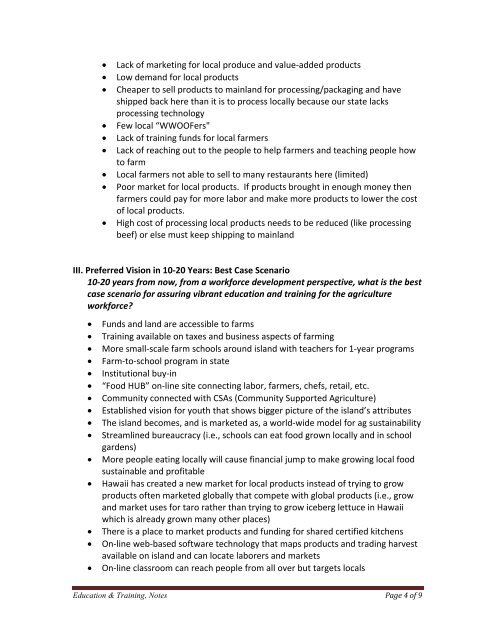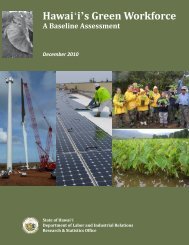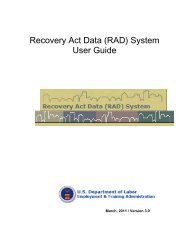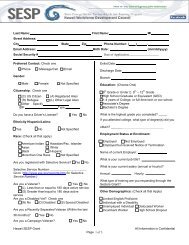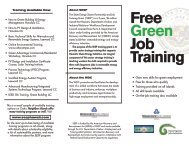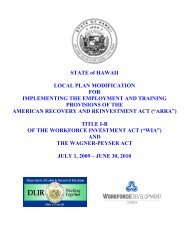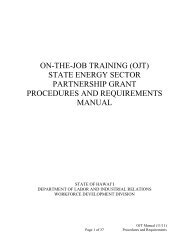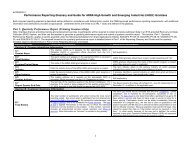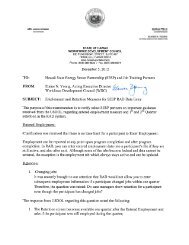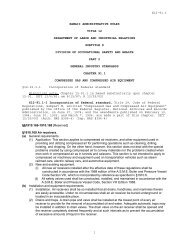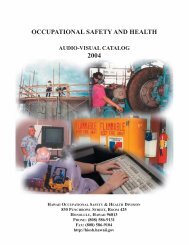Education and Training Discussion Notes
Education and Training Discussion Notes
Education and Training Discussion Notes
Create successful ePaper yourself
Turn your PDF publications into a flip-book with our unique Google optimized e-Paper software.
• Lack of marketing for local produce <strong>and</strong> value‐added products<br />
• Low dem<strong>and</strong> for local products<br />
• Cheaper to sell products to mainl<strong>and</strong> for processing/packaging <strong>and</strong> have<br />
shipped back here than it is to process locally because our state lacks<br />
processing technology<br />
• Few local “WWOOFers"<br />
• Lack of training funds for local farmers<br />
• Lack of reaching out to the people to help farmers <strong>and</strong> teaching people how<br />
to farm<br />
• Local farmers not able to sell to many restaurants here (limited)<br />
• Poor market for local products. If products brought in enough money then<br />
farmers could pay for more labor <strong>and</strong> make more products to lower the cost<br />
of local products.<br />
• High cost of processing local products needs to be reduced (like processing<br />
beef) or else must keep shipping to mainl<strong>and</strong><br />
III. Preferred Vision in 10‐20 Years: Best Case Scenario<br />
10‐20 years from now, from a workforce development perspective, what is the best<br />
case scenario for assuring vibrant education <strong>and</strong> training for the agriculture<br />
workforce?<br />
• Funds <strong>and</strong> l<strong>and</strong> are accessible to farms<br />
• <strong>Training</strong> available on taxes <strong>and</strong> business aspects of farming<br />
• More small‐scale farm schools around isl<strong>and</strong> with teachers for 1‐year programs<br />
• Farm‐to‐school program in state<br />
• Institutional buy‐in<br />
• “Food HUB” on‐line site connecting labor, farmers, chefs, retail, etc.<br />
• Community connected with CSAs (Community Supported Agriculture)<br />
• Established vision for youth that shows bigger picture of the isl<strong>and</strong>’s attributes<br />
• The isl<strong>and</strong> becomes, <strong>and</strong> is marketed as, a world‐wide model for ag sustainability<br />
• Streamlined bureaucracy (i.e., schools can eat food grown locally <strong>and</strong> in school<br />
gardens)<br />
• More people eating locally will cause financial jump to make growing local food<br />
sustainable <strong>and</strong> profitable<br />
• Hawaii has created a new market for local products instead of trying to grow<br />
products often marketed globally that compete with global products (i.e., grow<br />
<strong>and</strong> market uses for taro rather than trying to grow iceberg lettuce in Hawaii<br />
which is already grown many other places)<br />
• There is a place to market products <strong>and</strong> funding for shared certified kitchens<br />
• On‐line web‐based software technology that maps products <strong>and</strong> trading harvest<br />
available on isl<strong>and</strong> <strong>and</strong> can locate laborers <strong>and</strong> markets<br />
• On‐line classroom can reach people from all over but targets locals<br />
<strong>Education</strong> & <strong>Training</strong>, <strong>Notes</strong> Page 4 of 9


